If You See This on Your Walls, You May Have Mice, Experts Say
The good news? Noticing these markings may help you keep mice out once and for all.
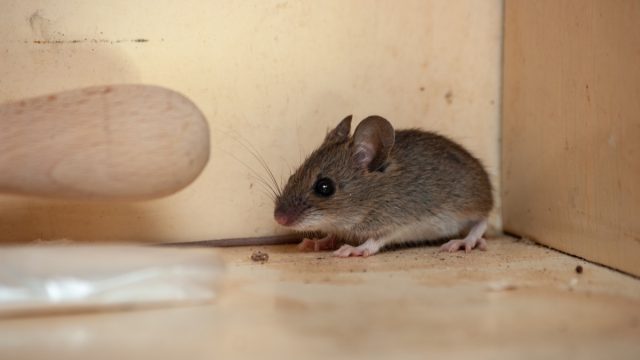
Think you've got a mouse in your house? Chances are if you've got one, you've got many. However, because mice are nocturnal animals, we often don't see them—and instead, we need to rely on the clues they leave behind to determine whether they've infiltrated our homes.
Unfortunately, even when we don't see them, mice can spread diseases including hantavirus, leptospirosis, salmonellosis, and more, some of which can be life-threatening, according to the Centers for Disease Control and Prevention (CDC). That's why pest experts are spreading the word about some of the more reliable signs that you may have a mouse infestation. They say that there's one sign that's a dead giveaway of a mouse problem in your home—and it may also reveal how they're getting in. Read on to find out what to look for on your walls and what to do if you spot a problem.
RELATED: 6 Foods in Your Kitchen That Are Bringing Mice Into Your Home.
If you notice streaking or smudging along your walls or baseboards, you may have mice.
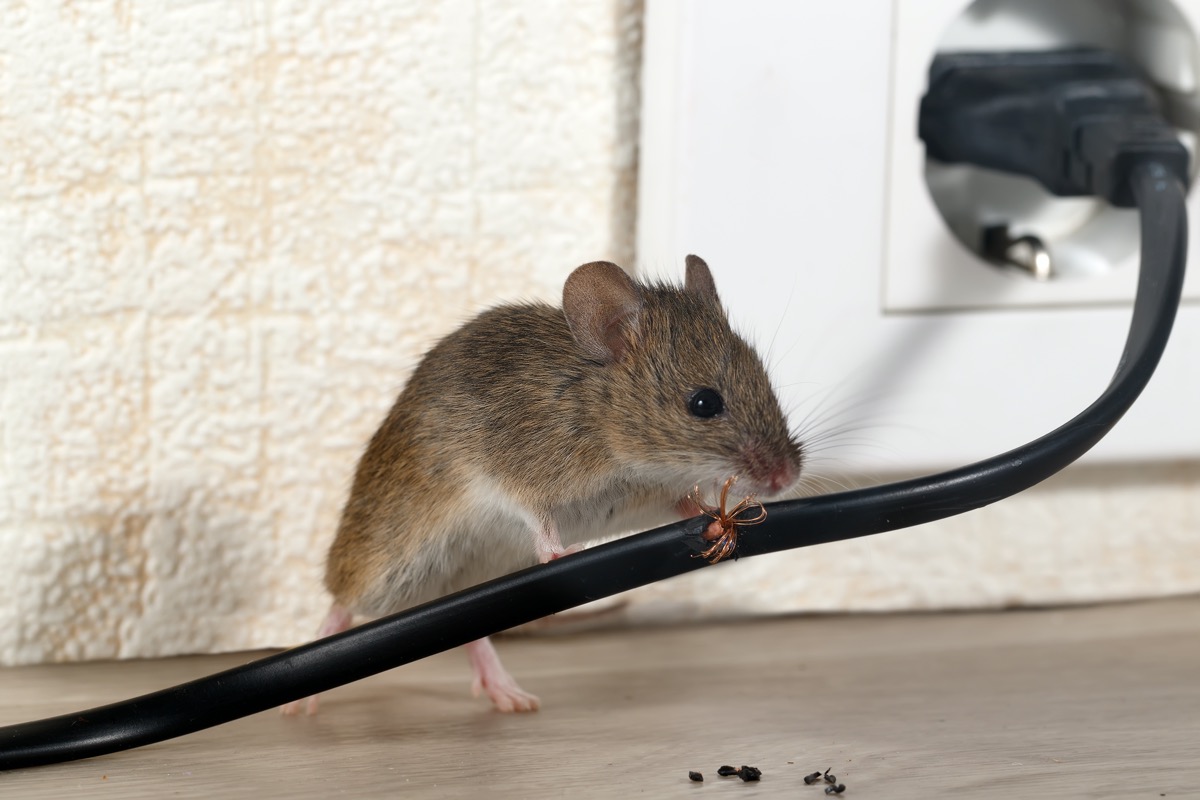
Mice have poor eyesight, so they rely on several of their other senses—specifically smell, sound, and touch—to get around safely. They tend to follow the same paths around your home, often staying close to the walls for extra protection.
That's why experts say that if you notice greasy or dirty-looking markings along your walls or baseboards, it's a likely sign of a mouse problem. "A regular pattern of dirty smudges along floors and baseboards could be a sign of mouse traffic," according to home improvement resource BobVila.com. "Over time, the dirt from their fur and feet will create a distinctive streaking or smudging tracery along the path."
The site notes that mice may also leave small amounts of urine or droppings along their path, which may mean you also notice a distinctive ammonia smell in the areas where smudging is present.
RELATED: 7 Cleaning Habits That Attract Mice.
You can track these smudges to look for their entry points.
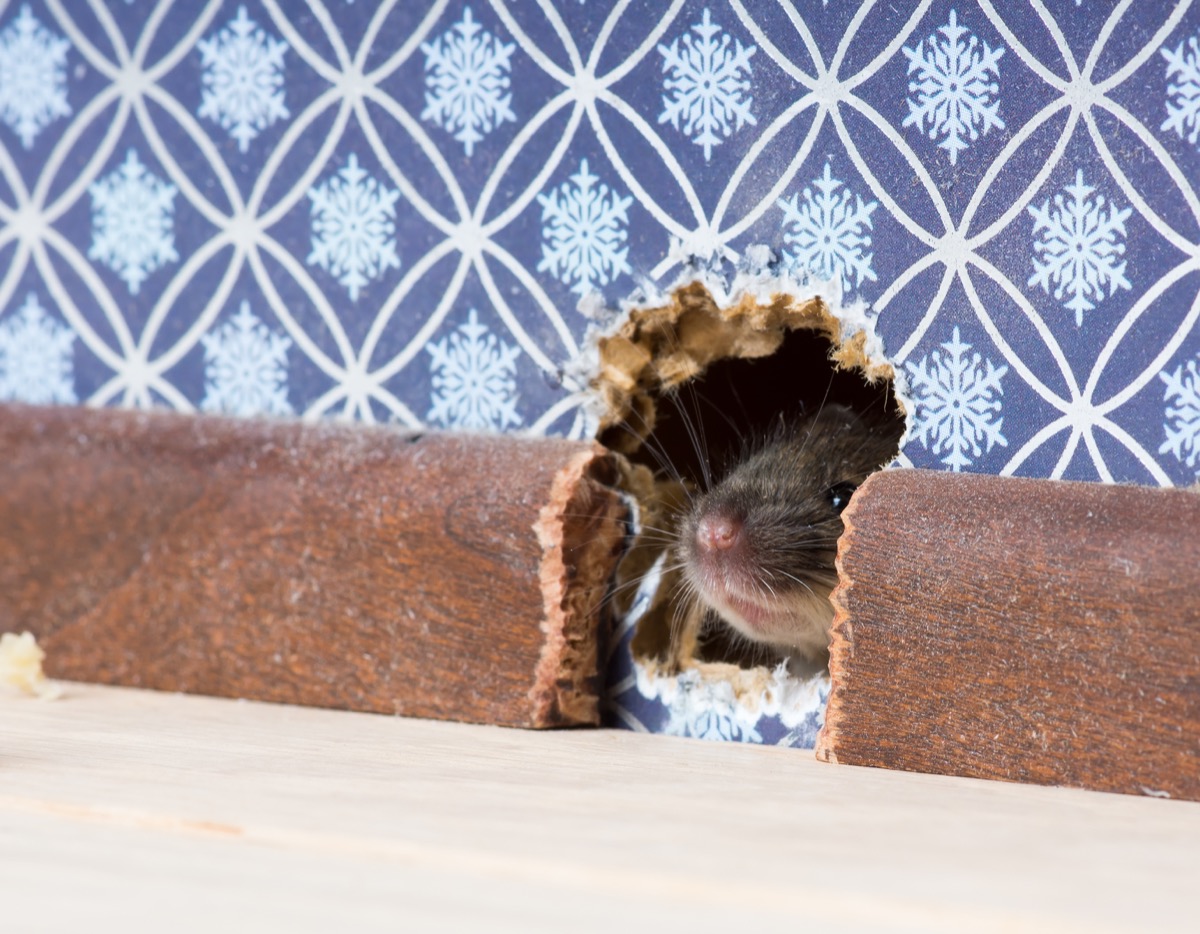
While no one wants greasy smudges lining their walls and floorboards, there's one silver lining if you do happen to notice the markings: it may tell you how the mice are getting in. Follow the tracks and look for any small openings in the wall or floor, pest control experts recommend.
"As mice wedge through tiny openings as small as ¼ inch, they often leave greasy smudge marks caused by oils and dirt in their coat. If you see these greasy smears, that's a likely entry point for mice," says Sage Pest Control.
Looking for a simple solution to your unintended point of entry? You can close small holes using steel wool sealed with caulk.
If you don't see smudging, here's where to look for entry points.
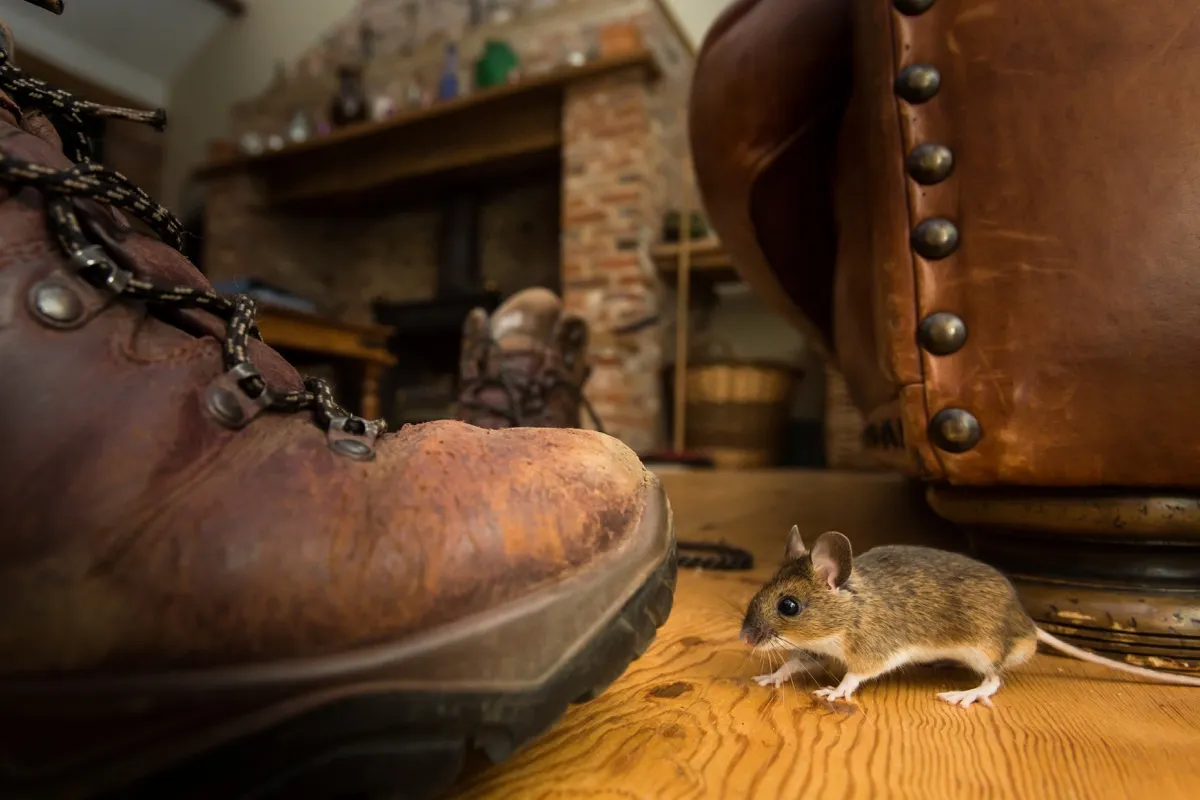
According to the CDC, you may be able to locate the mouse's entry points even without telltale streaking—you just need to know where to look. The health authority recommends looking for gaps and holes "inside, under, and behind kitchen cabinets, refrigerators, and stoves." Additionally, mice often enter the home inside closets and around fireplaces.
Pipes and vents are also ideal entry points for mice. The CDC recommends sealing around the pipes under sinks, washing machines, hot water heaters or furnaces, and around vents.
Finally, check your attic and basement carefully for signs of entry. Mice are most comfortable in dark, low-traffic areas like these.
For more pest control tips sent directly to your inbox, sign up for our daily newsletter.
Specific scents can help keep mice away.
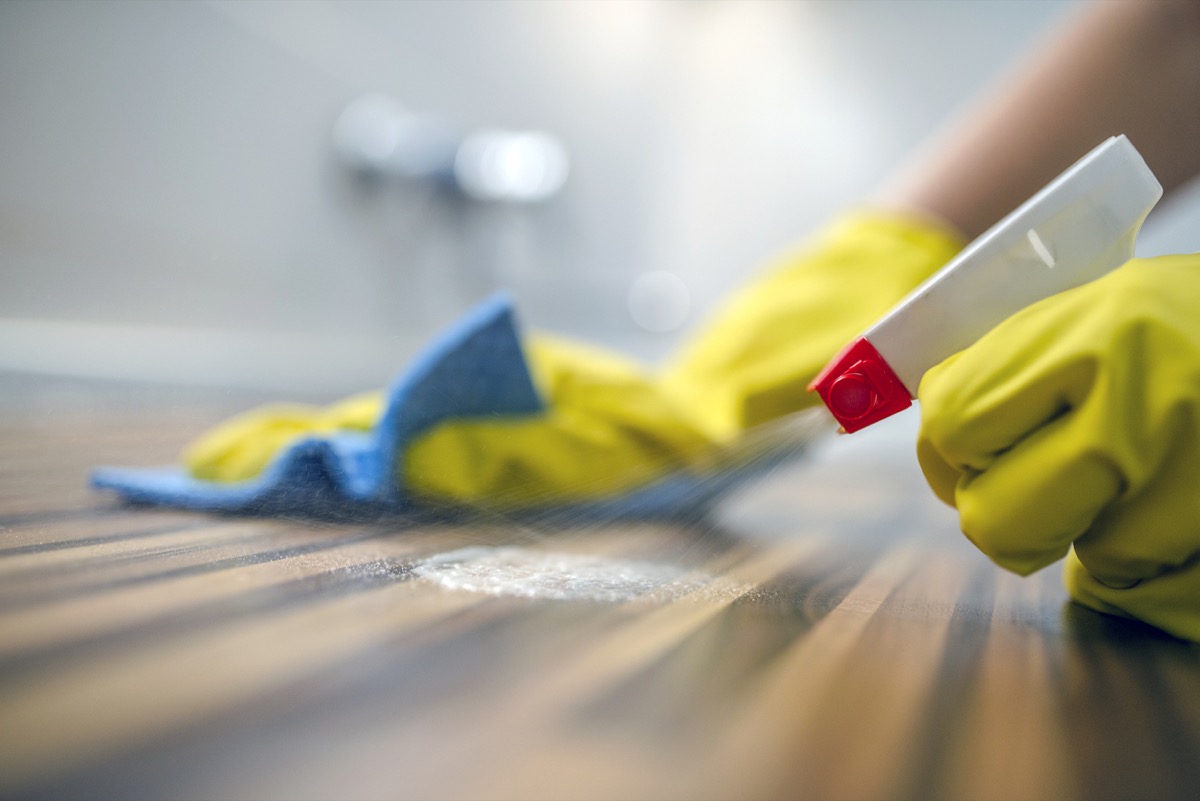
In addition to sealing off their points of entry, there are several other steps you can take to minimize your chances of a mouse problem.
Ryan Smith, an entomologist, organic pest control expert, and owner of Ant and Garden Organic Pest Control tells Best Life that you can help get rid of mice "by removing their source of food and water." This means keeping your kitchen free of food scraps, doing any dishes that may be sitting in your sink, sealing off your garbage cans, and storing food (including pet food) in tightly sealed plastic or glass containers. Smith adds that "mice also hate certain scents, including peppermint and cayenne pepper," and says that spraying a solution containing these scents should help repel rodents from your home.
RELATED: If You're Not Cleaning This, You're Inviting Mice Into Your Home.





















